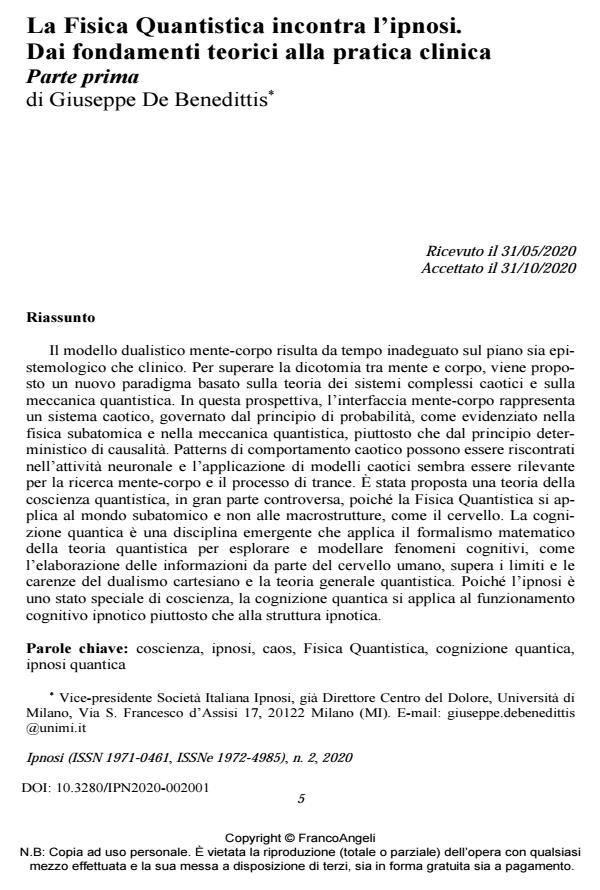Quantum Physics encounters Hypnosis. From theories to clinical practice
Journal title IPNOSI
Author/s Giuseppe De Benedittis
Publishing Year 2020 Issue 2020/2
Language Italian Pages 19 P. 5-23 File size 240 KB
DOI 10.3280/IPN2020-002001
DOI is like a bar code for intellectual property: to have more infomation
click here
Below, you can see the article first page
If you want to buy this article in PDF format, you can do it, following the instructions to buy download credits

FrancoAngeli is member of Publishers International Linking Association, Inc (PILA), a not-for-profit association which run the CrossRef service enabling links to and from online scholarly content.
A substantial body of evidence does not support the mind-body dualistic model on both epistemological and clinical grounds. In order to overcome the dichotomy between Mind and Body, a new paradigm based upon Chaotic Complex Systems Theory and Quantum Mechanics is proposed. Accordingly, Mind/Body interface represents a chaotic system, ruled by the probability principle, as shown in subatomic physics and quantum mechanics, rather than by the deterministic principle of causality. Patterns of chaotic behavior can be found in neuronal activity and applications of chaotic patterns seem to be relevant for mind-body research and the process of trance. A Quantum Consciousness theory has been proposed, largely controversial, since Quantum Physics applies to subatomic world and not to macrostructures, such as the brain. Quantum cognition is an emerging field which applies the mathematical formalism of quantum theory to explore and model cognitive phenomena such as information processing by the human brain. It overcomes limits and shortcomings of cartesian dualism as well as quantum general theory. As hypnosis is a discrete state of consciousness, it applies to hypnotic cognitive functioning rather than hypnotic structure.
Keywords: Consciousness, hypnosis, chaos, quantum physics, quantum cognition, quantum-like hypnosis
- I fenomeni ipnotici nel trattamento del disturbo sessuale della penetrazione Ilaria Genovesi, Luca Bidogia, Carlotta Di Giusto, in IPNOSI 1/2025 pp.49
DOI: 10.3280/IPN2025-001004
Giuseppe De Benedittis, La Fisica Quantistica incontra l’ipnosi. Dai fondamenti teorici alla pratica clinica Parte prima in "IPNOSI" 2/2020, pp 5-23, DOI: 10.3280/IPN2020-002001